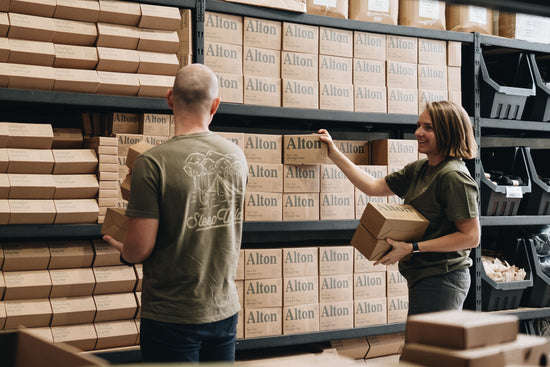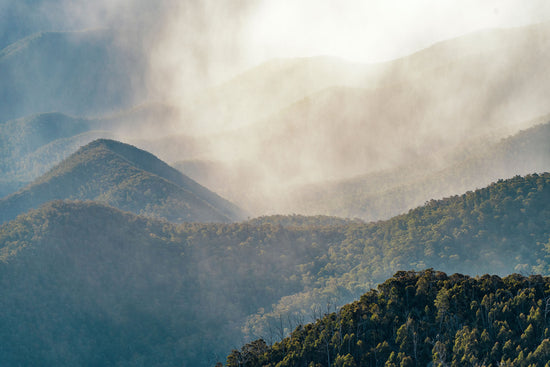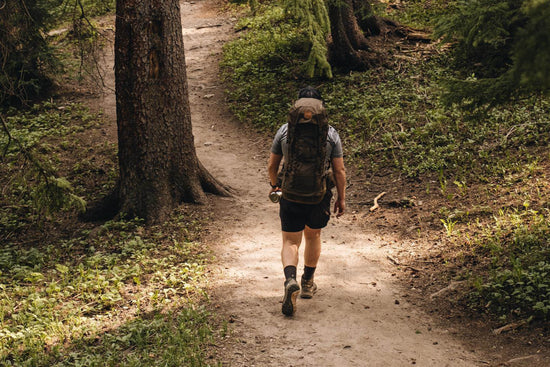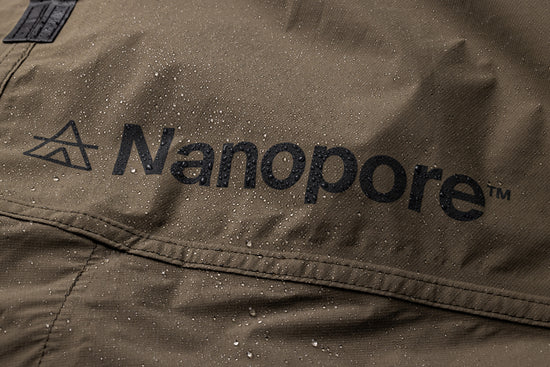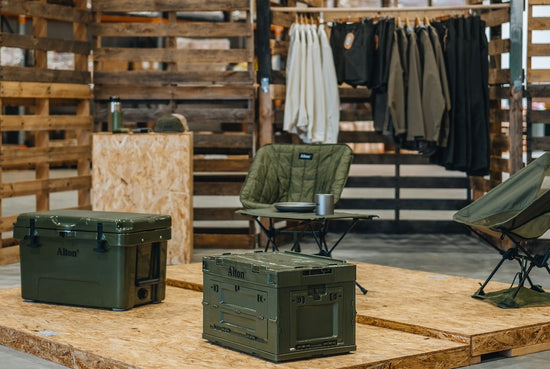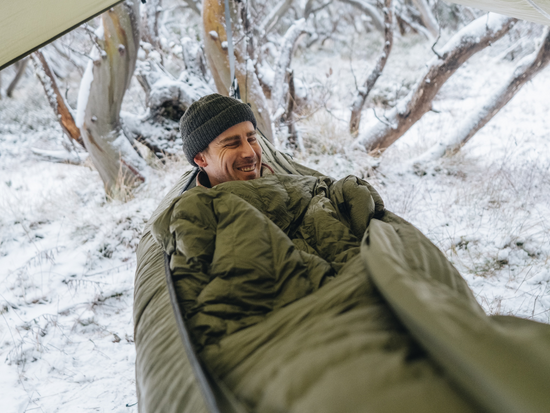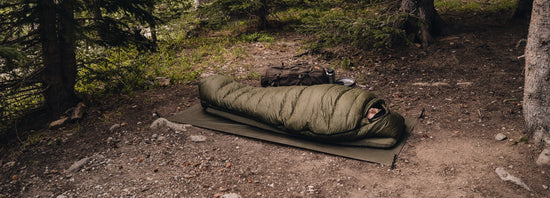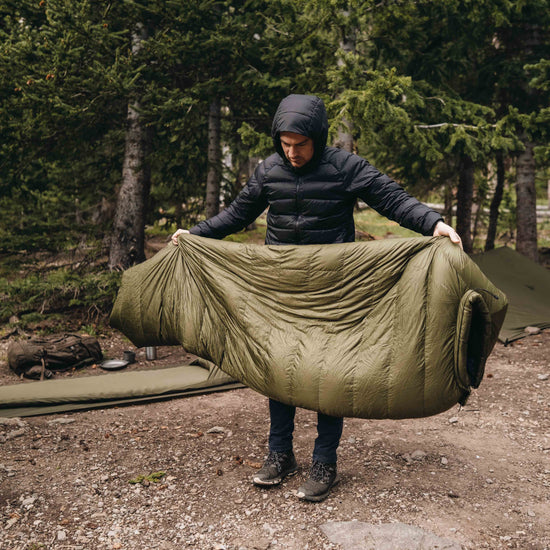OUR SLEEPING BAGS
Ultralight Sleeping Bag -10ºC
BEST FOR RELIABLE WARMTH IN WINTER CONDITIONS
If you camp in alpine areas, winter conditions, or are a cold sleeper, then you can count on this sleeping bag to provide the insulation you need to stay warm and sleep well.
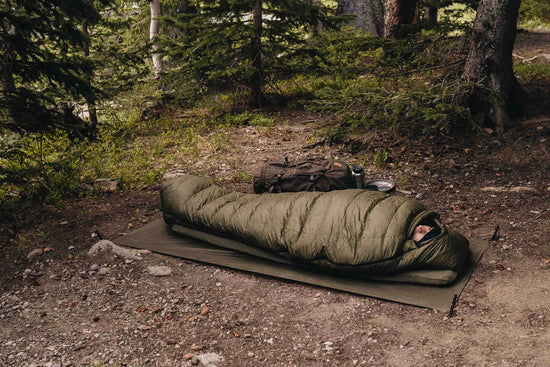
Ultralight Sleeping Bag -5ºC
BEST FOR ALL-ROUND INSULATION PERFORMANCE
Weighing just 1.04kg and packing down to an extremely compact size, this sleeping bag offers the ideal warmth-to-weight ratio for camping in variable conditions year round.
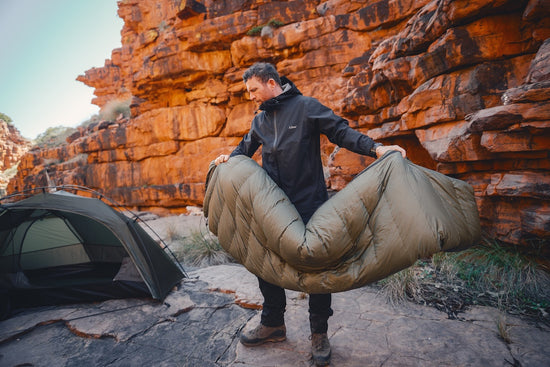
Ultralight Sleeping Bag 0ºC
BEST FOR LIGHTWEIGHT WARMTH & PACKABILITY
This sleeping bag balances warmth with lightweight packability, ideal for people who prefer to camp in mild conditions, but still want to be equipped if the temperature drops.
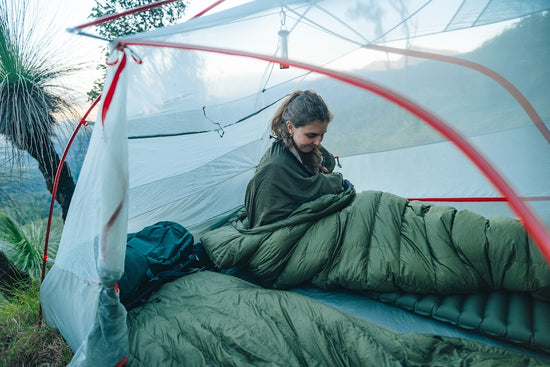
Ultralight Summer Sleeping Bag +10ºC
BEST FOR ULTRALIGHT HIKING TRIPS IN WARM WEATHER
Made with the same high-performance materials as the rest of the range, our summer sleeping bag is perfect for warm weather adventures where weight is a high priority.
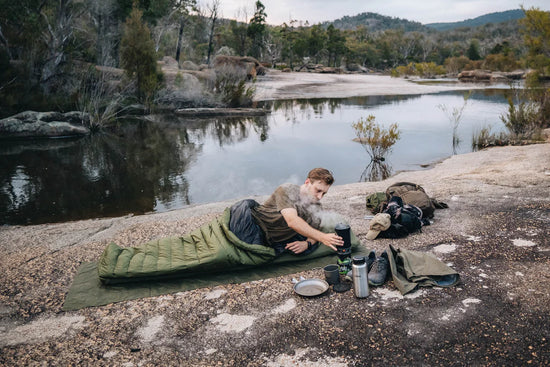
Sleeping Bag Comparison
- Comfort Rating
- Lower Limit Rating
- Extreme Rating
- Shell Material
- Down Fill
- Fill Weight
- Total Weight
- ISO 23537-1:2022 Certified
- Lifetime Warranty*
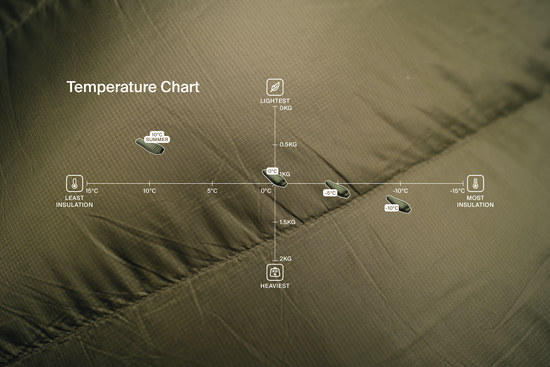
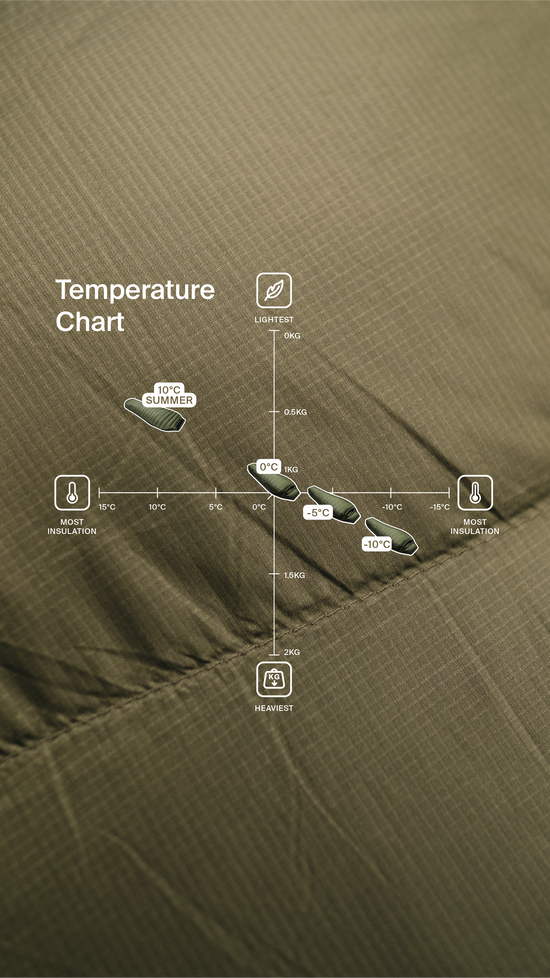
ISO 23537-1:2022 Sleeping Bag Warmth Ratings
ISO 23537-1:2022 is an internationally recognised standard used to determine sleeping bag Comfort, Lower Limit, and Extreme temperature thresholds. We’ve put together this guide to explain what those ratings really mean, so you can choose the right sleeping bag with confidence, and stay warm when it matters most.
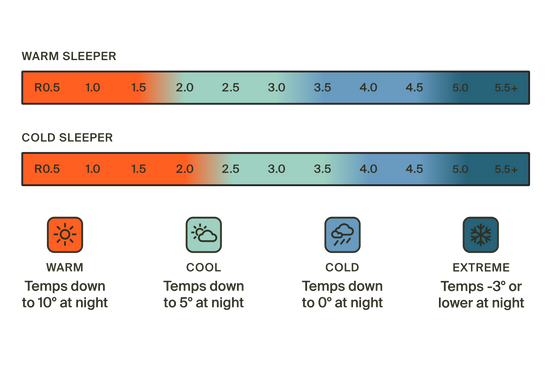
We sell direct and share the savings.
No wholesalers, no distributors, no corporate middlemen. We skip the markups so you get high-quality gear for up to 40% less than traditional outdoor brands.
FAQs
-
We’ve got a whole blog article devoted to helping you pick a good sleeping bag based on your unique needs and preferences, but in a nutshell, here’s what you need to consider:
Temperature Rating
Choose a sleeping bag that has a suitable warm rating for the coldest overnight temperatures you may experience. Consider your own cold sensitivity, too, as this will impact how warm your sleeping bag needs to be in order for you to feel comfortable. When in doubt, it’s better to go slightly warmer than you think you’ll need.
Weight & Packability
For hiking or activities where you are going to be carrying your gear for long distances, having an ultralight, highly compressible sleeping bag is a big advantage. If you’re car camping or not going long distances, weight and packability won’t be as much of a concern.
Insulation Type
Both down and synthetic sleeping bags can provide excellent performance. Choose the option that meets your personal needs and preferences, considering the warmth, weight, cost, longevity, and impact of each insulation type.
Shape
The shape of your sleeping bag impacts how much it weighs, comfort, and warmth. Mummy sleeping bags are more efficient at trapping heat, but may feel a little more restrictive than a rectangular sleeping bag.
-
When it comes to sleeping bag fillings, there are two main choices: down or synthetic. This blog article provides a detailed overview of the pros and cons of both options, but here’s a quick recap:
Down Insulation
Down has exceptional warmth-to-weight performance, is extremely compressible, and can be capable of lasting for 10+ years when cared for correctly.
Untreated down is prone to wetting out if exposed to moisture, so most down used in outdoor gear and apparel is treated with a water-repellent coating.
High performance down insulation comes at a premium, but many hikers find that it’s worth the investment, especially if they are camping in cold environments or covering long distances.
Synthetic Insulation
Synthetic filling can be just as warm as down, although it will be slightly heavier and bulkier for the same level of insulation.
Synthetic insulation is also faster drying and less absorbent, which is an advantage in wet or damp environments. Synthetic sleeping bags are typically more affordable, too.
All in all, synthetic sleeping bags are an excellent option for general use in mild to cool conditions, or if you don’t need extreme warmth and packability of down.
-
How long your sleeping bag lasts depends on the quality of the materials and construction, how well you care for it and how much you use it.
High-quality sleeping bags are designed to withstand years of regular use if properly maintained. If you only use your sleeping bag a few times a year, it can easily last a decade or longer. If you use your sleeping bag frequently, such as for thru-hiking or bikepacking, then the signs of wear and tear might appear a lot faster.
To get the longest lifespan out of your sleeping bag, it’s essential that you keep it clean and store it correctly, in a cool, dry, place away from direct sunlight.
-
Yes, if you use a winter rated sleeping bag (temperature rating of -5ºC or more) in hot, summer conditions, you might overheat.
But it really depends on you, and the specific conditions you’re in.
Even in summer, the temperature overnight can drop down into the low teens or single digits. In that case, if you’re a cold sleeper you might find that you are ok using a -10ºC winter sleeping bag unzipped.
However, if you’re a hot sleeper, then you may find that using a winter sleeping bag in summer is unbearably warm, in which case it may be worth investing in a lightweight summer sleeping bag.
We’ve put together a guide on how to choose the right sleeping bag for your needs which includes a detailed explanation of how being a warm sleeper might impact your sleeping bag choice.
-
A 0ºC sleeping bag like ours is generally warm enough for mild to cool conditions, such as camping year round in lowland regions or coastal areas where the temperature stays above freezing overnight.
This is because the 0ºC rating is the lower limit, meaning that 0ºC is the coldest temperature the average person can use the sleeping bag before feeling uncomfortably cold. Cold sleepers should refer to the comfort rating, which is closer to 2ºC.
Both of these ratings are intended to give you an idea of the coldest conditions that sleeping bag is going to be functional in – not what’s going to be the most comfortable.
Sleeping with extra warm layers and using a sleeping bag liner can give you a bit of a buffer, but if you regularly camp in conditions where the temperature drops to freezing, then you may want to invest in a -5ºC sleeping bag instead.
-
The sustainability of down and synthetic insulation isn’t black and white. Within both categories of insulation there are options that are more and less sustainable, so it is important to do your research on the specific sleeping bag that you’re considering to see how it stacks up.
If you are looking at down sleeping bags, look for the RDS-certification, which ensures that the down was sourced from farms that implement strict standards to protect animal welfare. Down a natural, renewable material with a relatively low emissions footprint and environmental impact, but some people may not feel comfortable using a product derived from animals.
If you are considering a synthetic sleeping bag, you should look for synthetic fillings made from recycled materials and/or that can be recycled after use. Synthetic insulation is more energy intensive to produce and non-biodegradable, but recycling measures can mitigate these effects to an extent.
Whichever option you choose, if you are concerned about sustainability, then one of the best things you can do is to take proper care of your sleeping bag so that it lasts as long as possible, and then recycle or repurpose it after it’s reached the end of its usable life.
